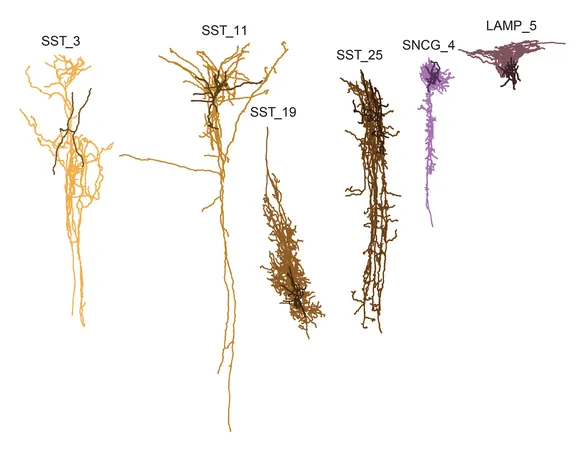
Groundbreaking Study Reveals Dual Phases of Brain Damage in Alzheimer's Disease
2024-10-15
Author: Wai
Groundbreaking Study Reveals Dual Phases of Brain Damage in Alzheimer's Disease
Recent advancements in brain mapping technology, funded by the National Institutes of Health (NIH), have unveiled a startling new perspective on Alzheimer's disease, indicating that brain damage unfolds in two distinct phases. This revelation has the potential to transform our understanding of the disease, leading to more effective diagnostic and therapeutic approaches.
The research, published in *Nature Neuroscience*, indicates that the early phase of Alzheimer's damage occurs silently and insidiously, often long before individuals exhibit memory loss or other cognitive symptoms. During this phase, vulnerable cell types, particularly a type of inhibitory neuron known as somatostatin (SST) neurons, begin to deteriorate. This damage is insidious, creating an environment that fosters deeper neural circuit dysfunctions underlying the disease.
As the disease progresses to the late phase, brain damage accelerates dramatically, coinciding with the onset of symptoms such as memory impairment. This second phase is marked by a rapid accumulation of amyloid plaques and tau tangles, which are the telltale signs of Alzheimer's pathology.
Dr. Richard J. Hodes, director of the NIH National Institute on Aging, emphasized the significance of these findings: "Understanding that much of the damaging processes occur before symptoms arise allows us to detect early changes in the brain. This fundamental shift in our understanding of Alzheimer's will inform the development of new treatments."
In this study, researchers meticulously analyzed the brains of 84 individuals, correlating genetic data from healthy individuals with Alzheimer's patients. They focused on the middle temporal gyrus, a brain region crucial for language and memory, revealing that early changes included slow plaque accumulation and immune activation alongside cell loss. Surprisingly, the study found that while previous beliefs centered on excitatory neurons as the primary victims of Alzheimer's, it is the deterioration of SST inhibitory neurons that may instigate broader neurological disruptions.
Moreover, the research has implications beyond mere observation. It supports previous findings that connect genetic factors to neuronal vulnerability in Alzheimer's, such as the role of the REELIN gene. Additionally, it highlights the potential protective role of astrocytes, star-shaped brain cells that may mitigate the impacts of Alzheimer’s on surrounding neurons.
This research, part of the Seattle Alzheimer’s Disease Brain Cell Atlas (SEA-AD), leveraged cutting-edge tools developed under the NIH's BRAIN Initiative. By processing data from over 3.4 million brain cells across various stages of Alzheimer’s, the collaborative team led by Dr. Mariano I. Gabitto and Dr. Kyle J. Travaglini has constructed a comprehensive timeline of cellular changes throughout the disease's progression.
The ramifications of this study are immense, not only for advancing our understanding of Alzheimer's but also for pointing to new pathways for drug development and intervention strategies. Dr. John Ngai, director of The BRAIN Initiative, stated, "The capabilities provided by our innovative neurotechnologies facilitate unprecedented insights into Alzheimer’s disease, enabling scientists to target specific developmental stages of the disease with potential diagnostics and treatments."
As research continues to evolve, this study serves as a beacon of hope, underscoring the importance of early detection and intervention in combating Alzheimer’s disease. With ongoing research, there is potential to better support individuals affected by this devastating condition, paving the way for breakthroughs in the pursuit of effective treatments and perhaps even a cure.

 Brasil (PT)
Brasil (PT)
 Canada (EN)
Canada (EN)
 Chile (ES)
Chile (ES)
 España (ES)
España (ES)
 France (FR)
France (FR)
 Hong Kong (EN)
Hong Kong (EN)
 Italia (IT)
Italia (IT)
 日本 (JA)
日本 (JA)
 Magyarország (HU)
Magyarország (HU)
 Norge (NO)
Norge (NO)
 Polska (PL)
Polska (PL)
 Schweiz (DE)
Schweiz (DE)
 Singapore (EN)
Singapore (EN)
 Sverige (SV)
Sverige (SV)
 Suomi (FI)
Suomi (FI)
 Türkiye (TR)
Türkiye (TR)